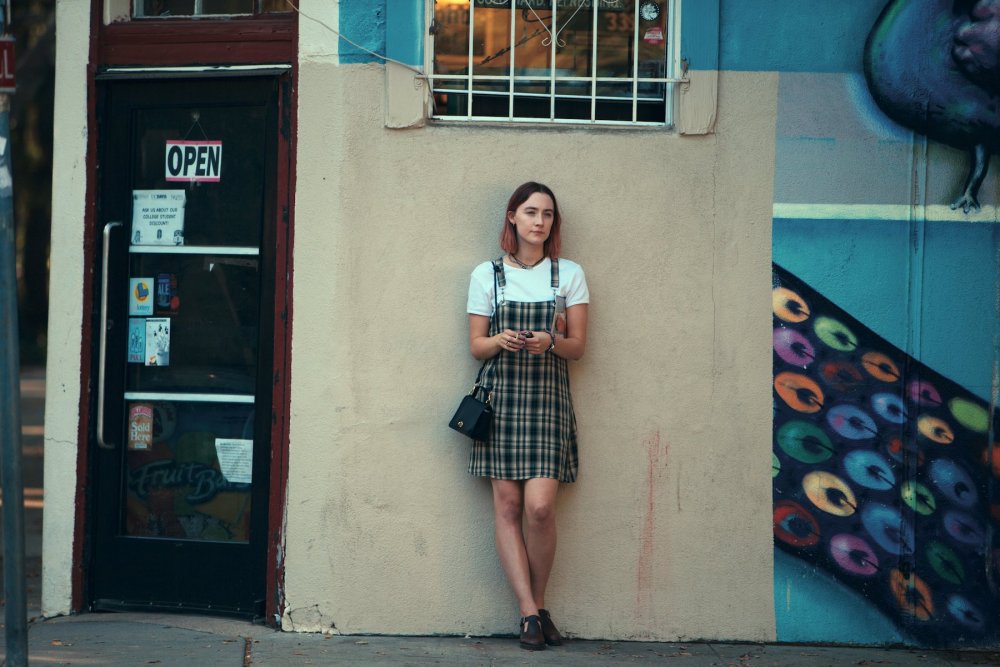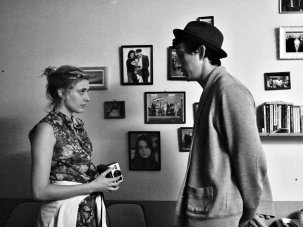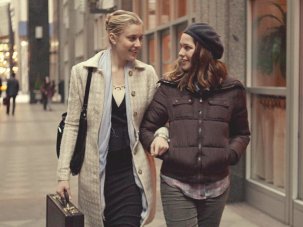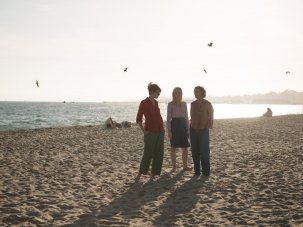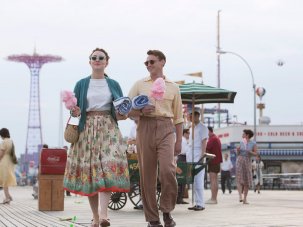Greta Gerwig’s Lady Bird begins with an abrupt act of violence that is both uncharacteristic of the film to come and illustrative of its method. Self-nicknamed teenager ‘Lady Bird’ (Saoirse Ronan) and her mother Marion (Laurie Metcalf) are returning to their home in Sacramento from a visit to a state university. Teary-eyed on finishing an audiobook detailing a very different California pilgrimage, John Steinbeck’s The Grapes of Wrath, they appear an image of perfect emotional synchronicity, but this changes in an instant when the contentious topic of college choices comes up, an argument that Lady Bird ends by tossing herself out of the moving car.
USA 2017
Certificate 15 94m 23s
Director Greta Gerwig
Cast
Christine McPherson, ‘Lady Bird’ Saoirse Ronan
Marion McPherson Laurie Metcalf
Larry McPherson Tracy Letts
Danny O’Neill Lucas Hedges
Kyle Scheible Timothée Chalamet
Julie Steffans Beanie Feldstein
Sister Sarah Joan Lois Smith
Father Leviatch Stephen McKinley Henderon
[1.85:1]
UK release date 16 February 2018
Distributor Universal Pictures International
ladybirdmovie.co.uk
► Trailer
Rather than linger on the immediate aftermath of this rash and suicidal gesture, we pick up with Lady Bird sporting a cast on her forearm, in a sprightly opening credits montage set to Jon Brion’s score. Lady Bird, Gerwig’s second feature as director, never lingers. She is credited as co-director on 2008’s Nights and Weekends with Joe Swanberg, with whom she worked repeatedly as performer and collaborator – but more than those films her first solo outing recalls Frances Ha (2012) and Mistress America (2015), two movies she co-wrote with and starred in for partner Noah Baumbach. Like those films, Lady Bird’s form is that of a chain of short scenes, many of them lasting a minute or less, sticking around only long enough to convey a bit of necessary information or social observation, or to generate atmosphere before exiting on a piquant punchline, often one that places the heroine in a just-slightly unflattering light.
The movie has a full-circle timeframe that stretches from the beginning of one school year to the start of another – from senior year in high school to freshman year in college. The cast comes off; Lady Bird’s father (Tracy Letts) loses his job while she loses her virginity; the two of them conspire to apply to Columbia behind the back of disapproving mom – there hasn’t been this much fuss over choosing a college since Hardy’s Jude set his sights on Christminster.
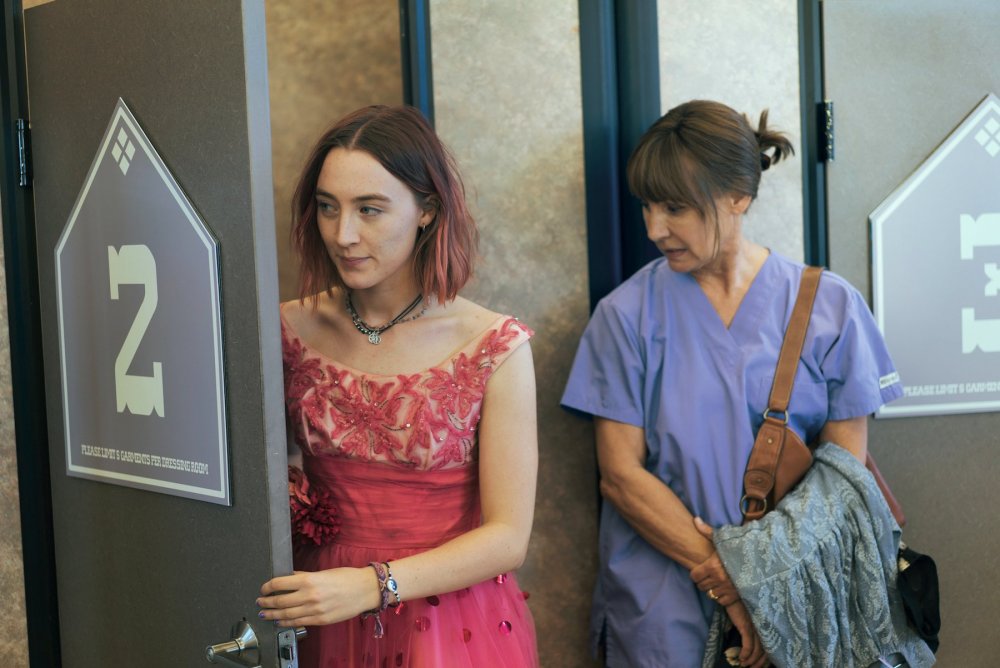
Ronan with Laurie Metcalf as Marion McPherson
Gerwig, who can hardly be accused of doing tragic melodrama in the Hardy line, favours quick, curt exchanges that often play out like three-frame comic strips, and in a 93-minute movie with a goodly number of speaking roles, this demands a cast able to delineate character with little screen time. The calibre of the performers that Gerwig has assembled is her movie’s greatest virtue. At Lady Bird’s Catholic school, Lois Smith and Stephen McKinley Henderson leave lasting impressions with a handful of lines, and Letts in shapeless khakis is the spirit of doting, dad-jokey decency. Finally, Lucas Hedges, the orphaned teen of Manchester by the Sea, provides a perfect miniature of an Irish-American Catholic kid submerging conflicted same-sex desires in drama class.
At the centre of all of this is the mother-daughter interplay between Ronan and Metcalf. Their relationship has only two speeds, simpatico and squabbling, and they switch between them with whiplash abruptness, as on a thrift-store outing when they 180 from sniping to cooing over a find. These central roles aren’t significantly more shaded than the swift-sketch supporting parts, however. The great Metcalf mouths penny-pinching variations on the theme of economic precariousness, while the character of Lady Bird remains curiously abstruse, motivated by a yearning for escape and ‘culture’.
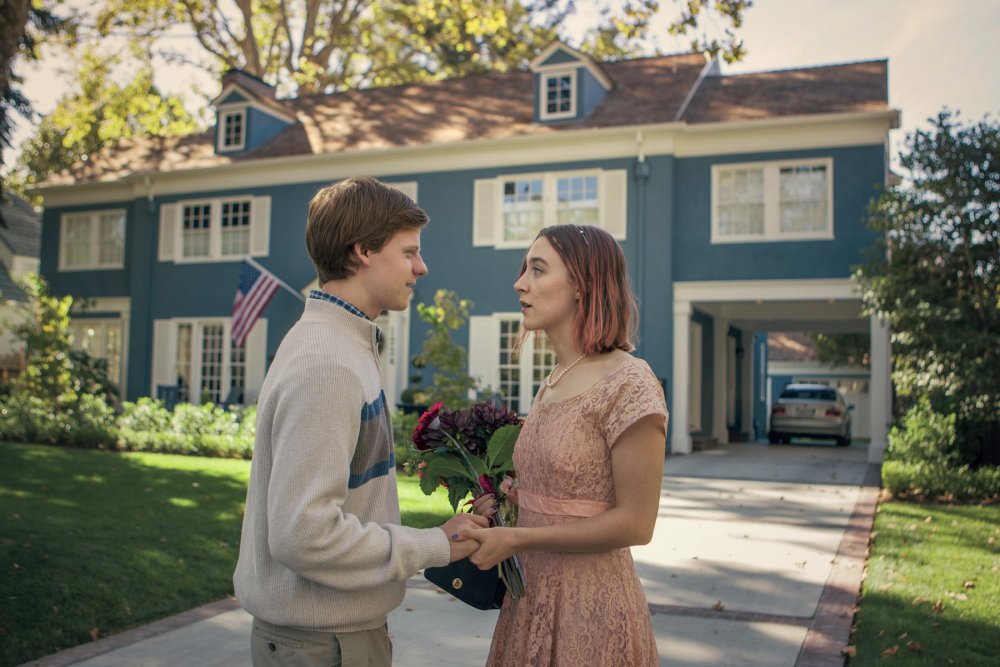
Lucas Hedges as Danny O’Neill with Ronan
This is perhaps appropriate for a character in the process of becoming – when Smith’s Sister Sarah Joan notes that her student isn’t strong in maths, Lady Bird replies “that we know of yet”. It also betrays a murkiness under the surface of a movie deeply invested in details: of Catholic school ritual, of telltale markers defining various strata of ‘middle class’, of the geographic and atmospheric specificities of the Sacramento Valley, including the most romantic views of the Tower Bridge and the McKinley Park Rose Garden in cinema. But when Gerwig tries to hit the tone of senior year, it feels like several years telescoped into one, capturing little sense of the established social ecosystem and rapport that develop over time.
There’s something opaque and newborn about this nest-bound Lady Bird, and Sister Sarah Joan’s reproach that “perhaps you haven’t always been an active part of this community” only goes so far towards explaining her tabula rasa state, a cipher quality perhaps partly accountable for the film’s touted universality. In a cultural climate increasingly loath to give offence, it can’t hurt Lady Bird’s chances that there’s nothing not to like in it.
But while there is an acute authorial intelligence informing the transitions between scenes, the steady trot of clipped vignettes comes to seem monotonous and somewhat evasive, a way to move along before anything too hard and hurtful happens. None of this is accidental; Gerwig is too smart a writer to coincidentally open a movie of deflections and escapes with a scene of dramatic conflict avoidance. The sense of retreat is true to the film’s central character; it’s simply that I wish the director would, just once, give pursuit.
In the March 2018 issue of Sight & Sound
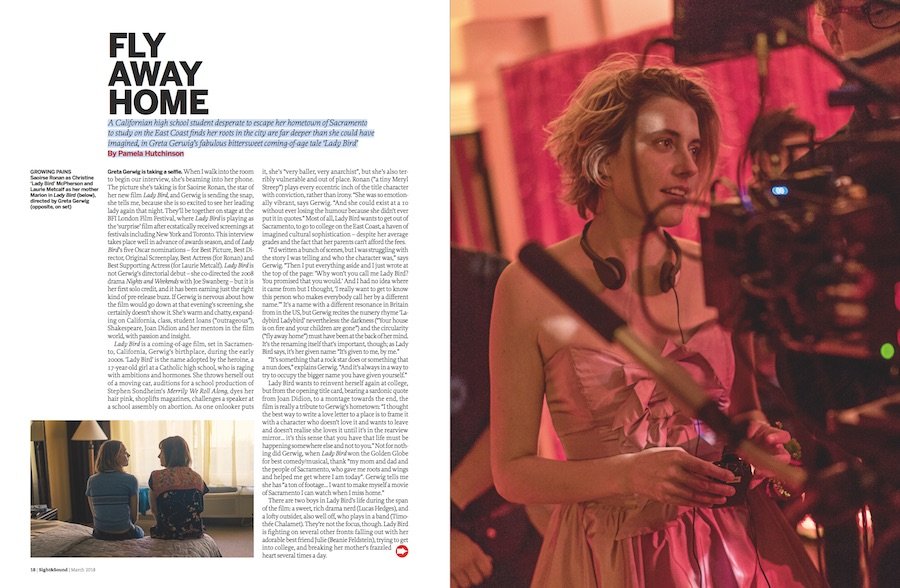
Fly away home
A Californian high school student desperate to escape her hometown of Sacramento to study on the East Coast finds her roots in the city are far deeper than she could have imagined, in Greta Gerwig’s fabulous bittersweet coming-of-age tale Lady Bird. By Pamela Hutchinson.
+
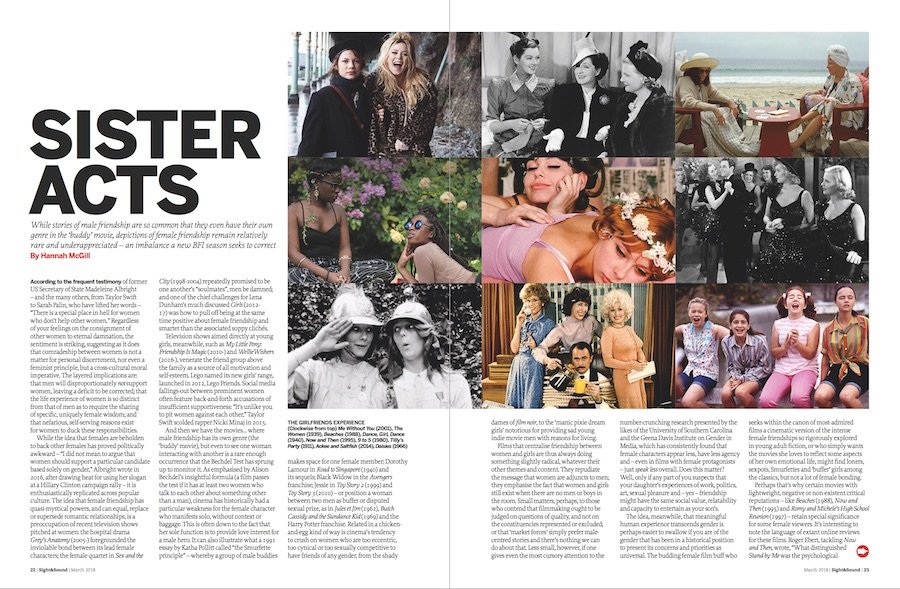
Sister acts
While stories of male friendship are so common that they even have their own genre in the ‘buddy’ movie, depictions of female friendship remain relatively rare and underappreciated – an imbalance a new BFI season seeks to correct. By Hannah McGill.
-
Sight & Sound: the March 2018 issue

Greta Gerwig on Lady Bird, plus girl friends in the movies, The Shape of Water, Loveless, The Touch, A Fantastic Woman, Dark River and our...
-
The Digital Edition and Archive quick link
Log in here to your digital edition and archive subscription, take a look at the packages on offer and buy a subscription.




